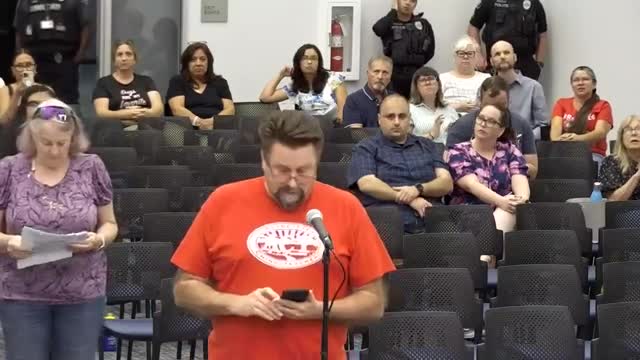Community outraged over vague no deception policy
September 06, 2024 | Chino Valley Unified, School Districts, California
This article was created by AI summarizing key points discussed. AI makes mistakes, so for full details and context, please refer to the video of the full meeting. Please report any errors so we can fix them. Report an error »

During a recent school board meeting, significant concerns were raised regarding a proposed \"no deception\" policy aimed at enhancing transparency within the Chino Valley Unified School District (CVUSD). Critics of the policy expressed that its vague language could lead to confusion and unintended consequences, particularly regarding the responsibilities of teachers and staff in communicating with parents about students' personal matters.
One speaker highlighted the lack of clarity in the policy, questioning who would determine what constitutes \"deception\" and what repercussions would follow for educators who might inadvertently violate the policy. Concerns were also voiced about the potential for the policy to be misused, particularly in relation to sensitive topics such as students' gender identity and sexual orientation. The speaker warned that the policy could serve as a \"workaround\" for existing protections, potentially putting vulnerable students at risk.
Another participant drew parallels between the proposed policy and recent tragic events in Georgia, emphasizing the importance of prioritizing student safety over political agendas. They criticized the board for allegedly ignoring threats to student safety while focusing on issues related to LGBTQ+ students, suggesting that the board's actions could be perceived as discriminatory.
Further criticism came from speakers who accused board members of using the policy as a tool for political posturing rather than addressing real issues affecting students, such as bullying and mental health. One speaker pointed out that the resolution could create chaos in classrooms, particularly in situations where teachers are required to report sensitive information about students to parents, potentially endangering students in abusive situations.
The meeting also touched on broader themes of accountability and transparency within the board itself, with speakers questioning the motivations behind the policy and the board's overall approach to governance. The discussion highlighted a growing divide within the community regarding how best to support students while ensuring their safety and well-being.
As the board continues to deliberate on the policy, the implications of its language and intent remain a focal point of concern for educators, parents, and community members alike. The outcome of this discussion could significantly impact the district's approach to student welfare and parental communication moving forward.
One speaker highlighted the lack of clarity in the policy, questioning who would determine what constitutes \"deception\" and what repercussions would follow for educators who might inadvertently violate the policy. Concerns were also voiced about the potential for the policy to be misused, particularly in relation to sensitive topics such as students' gender identity and sexual orientation. The speaker warned that the policy could serve as a \"workaround\" for existing protections, potentially putting vulnerable students at risk.
Another participant drew parallels between the proposed policy and recent tragic events in Georgia, emphasizing the importance of prioritizing student safety over political agendas. They criticized the board for allegedly ignoring threats to student safety while focusing on issues related to LGBTQ+ students, suggesting that the board's actions could be perceived as discriminatory.
Further criticism came from speakers who accused board members of using the policy as a tool for political posturing rather than addressing real issues affecting students, such as bullying and mental health. One speaker pointed out that the resolution could create chaos in classrooms, particularly in situations where teachers are required to report sensitive information about students to parents, potentially endangering students in abusive situations.
The meeting also touched on broader themes of accountability and transparency within the board itself, with speakers questioning the motivations behind the policy and the board's overall approach to governance. The discussion highlighted a growing divide within the community regarding how best to support students while ensuring their safety and well-being.
As the board continues to deliberate on the policy, the implications of its language and intent remain a focal point of concern for educators, parents, and community members alike. The outcome of this discussion could significantly impact the district's approach to student welfare and parental communication moving forward.
View full meeting
This article is based on a recent meeting—watch the full video and explore the complete transcript for deeper insights into the discussion.
View full meeting
